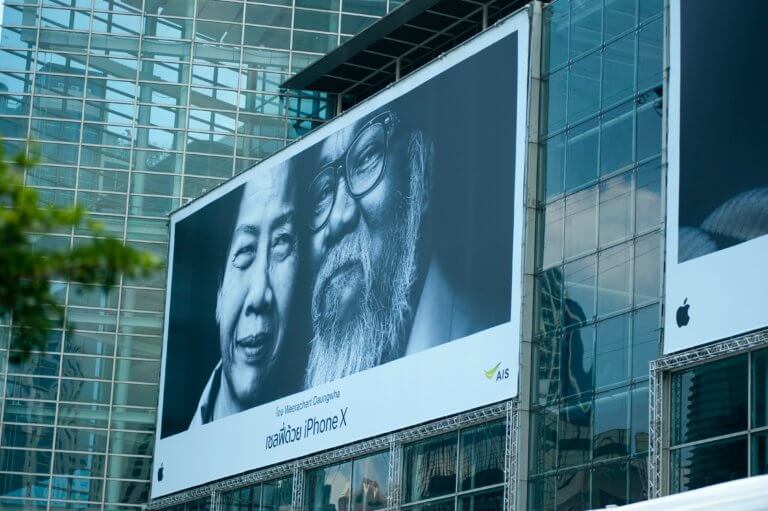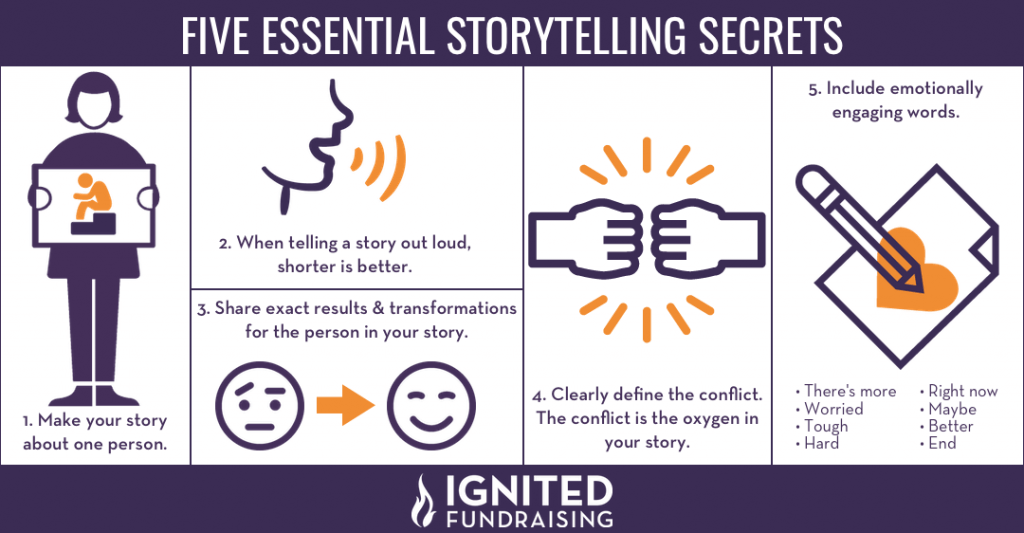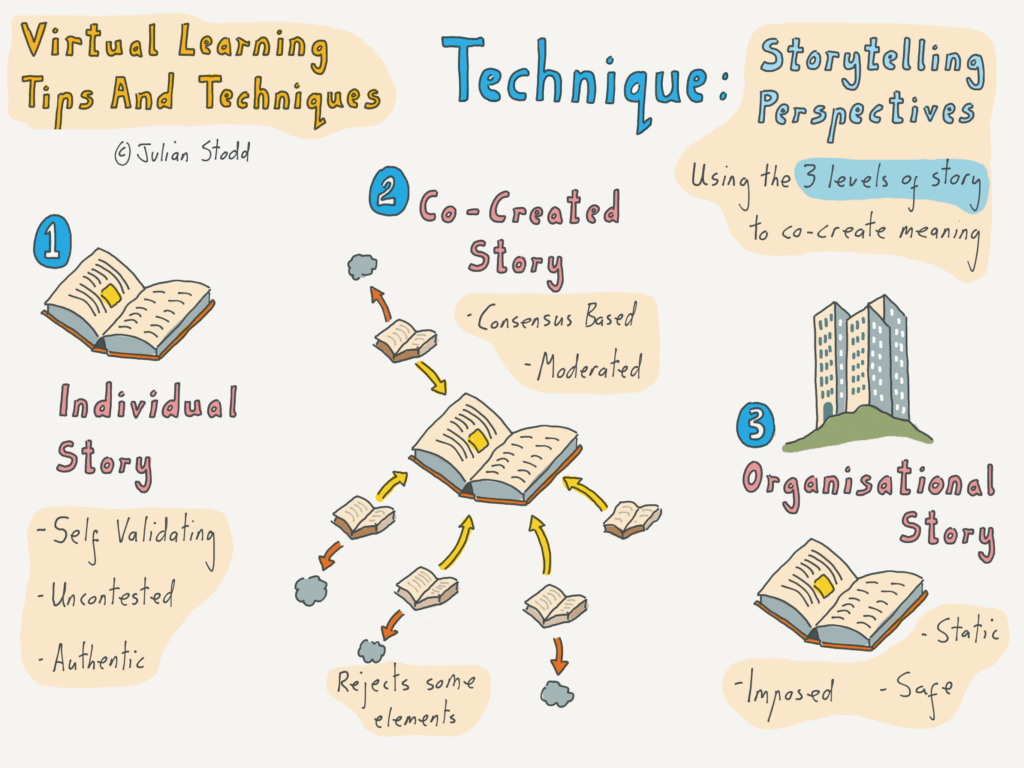
When we think of storytelling, we think of feel-good narratives or sitting ‘round a campfire sharing ghost stories. We use stories to make sense of the world around us and to fill in the gaps of knowledge and experience. Stories spread ideas like no other. They have a magical ability to weave themselves into our lives, filling in the gaps in our knowledge and experiences. They’re like those mysteriously disappearing socks in the laundry – you never quite know where they’ll end up.
Steven Spielberg did not expect the influence that Jaws would have decades after its release. But for OOH advertisers, storytelling marketing is like having an Ace up their sleeve – a powerful tool that can transform billboards and bus stops into epic canvases, turning everyday commutes into thrilling adventures and making commuters momentarily forget about their burnt toast mishaps or that they’re wearing mismatched socks. It’s the secret ingredient that takes OOH advertising from being just another wallflower to the life of the marketing party, leaving audiences hooked and brands basking in the warm glow of success.
But What is Storytelling Marketing Exactly?
While it would be simple to say that storytelling marketing is marketing by telling a story, it is more than that. Brands and advertisers have used stories to sell products for generations. Think of The Old Spice Guy or Marlboro Man, McDonald’s and its cast of characters, and, even, kid’s cereal. Remember the 80’s cartoons that were designed specifically to sell toys (looking at you, Teddy Ruxpin)? They all had narratives and story arcs, and kids loved them, but they quickly became stale. For lack of a better word, those cartoons became hokey. The reason is that they made the toy or the brand the main character. Ever have a conversation with someone and all they can do is talk about themselves? That’s what these stories felt like. It always led back to the brand; they told people all the ways to want them.
Storytelling marketing is a brand connecting with the world. The brand is no longer the main character (pardon the pun) but it is shifting the narrative focus elsewhere.
“Storytelling is the process of making a connection with the customer first, and selling a product second.” In their blog on the subject, Cleverism sums up storytelling marketing accurately. While it can seem counterintuitive to not focus on the product, building an emotional connection with your target audience can be vastly more effective. To do this, there are several different types of stories and multiple ways in which to tell them, what is key is understanding your audience. And if there is one thing OOH advertisers understand, it is the power of knowing who your audience is.
Source Photo by Anete Lusina from Pexels
Why It Works
As mentioned above, stories help us make sense of the world around us. They relay important information to an audience in culturally relevant ways. More than that, it connects us. The best highlight themes that are universal, like family, love, friendship, overcoming adversity, and hope. With the global market, competition is fierce and finding ways of relating to people from all walks of life is important to a brand’s success. Tapping into that very human need for a story can work to an OOH advertiser’s advantage.
It’s no surprise that billboards have often been a go-to for non-profit organizations, especially around holidays. With a powerful visual, they can raise donations for food banks, toys for Tot campaigns, and soup kitchens. These visual narratives connect to us in a way that words alone can’t. These campaigns can change perspectives and attitudes through personal stories, bring to light hidden issues through data-driven narratives, and through playing on audience expectations can revitalize a staid old brand.
Good storytelling gives more than brand promotion, it creates brand identity and personality. This kind of marketing also creates authentic connections that can build over time.
Storytelling Essentials
If you have ever fumbled the punchline to a joke, you know there is a right and a wrong way to tell a story. How we say something and why are just as important as what we are saying. Especially for OOH, which relies on catching people’s eyes quickly, the story has to sell itself. For any good story, there are some essential components. Here are some of the essentials of good storytelling:

Image source : Ignited Fundraising
- Truth– “Even brand stories must adhere to the three primary steps of brand-building: consistency, persistence, and restraint.” What story you tell has to, in some form, relate back to your brand identity. The story being told shapes the conversation around the brand, therefore, it needs to be authentic and real.
- Create personality– Storytelling is not about selling a product, it’s about selling the brand identity. Making consumers want to know more and become emotionally invested. Think back to those cartoons. One of the best examples is the original My Little Pony. It was well-marketed and the audience receptive but there was no emotional truth in them. The plots were formulaic, inoffensive, and as appealing as unbuttered toast. The characters had no depth to them and were easily forgettable. Compare that with the Friendship is Magic remake. Showrunner Lauren Faust wrote stories that kids of all genders could relate to. Parents did not mind rewatching the show as there were well-written narrative arcs and great humour. That remake spawned spin-offs, movies, and even a fandom.
- Interesting Characters- Every story needs to have well-rounded characters for people to buy in. The best ads feature individuals facing challenges that the audience can relate to. Or at least can get a laugh at it. Learning how to defy audience expectations and having a brand spokesperson who is outlandish or campy can also pay off. A good brand analogy would be the Old Spice Guy. Rather than featuring an unnamed mariner in a pea coat, the recent commercials dialled up the humour, and broke through the fourth wall with three competing Old Spice Guys in improbable scenarios, giving the well-worn brand a youthful vigour that resonated with a younger audience.
- Leave them wanting more- Overselling your brand story can kill the mood. A good narrative leaves the audience primed for what’s to come next. For a storytelling billboard, OOH advertisers can consider that space the prologue to the whole story. Leaving a website URL or QR code where the audience can go to find out more.
Image source: Pexels
Different Types of Stories

Image source : google
There is a wide array of storytelling styles that OOH advertisers can use. Each with its own function and methods. Using folk tales, for example, offers culturally relevant touchstones for your audience. Figures like Santa Claus or the Easter Bunny often work well when you are trying to evoke a sense of nostalgia. Other storytelling types work better for other purposes. How you use them will depend on your marketing strategy and your audience. During the recent pandemic, two of the most common types used were data-driven and personal stories.
Data-Driven Stories– One of the harder types of stories to craft, data-driven stories are about using numbers to tell a tale. During the past year and a half, we used numbers to tell the story of how things were going. Case rates, deaths, and vaccination levels all became part of our conversations, and that trend doesn’t seem to be going anywhere. Data can add that dash of reality that your storytelling marketing campaign needs. Whether that is levels of food insecurity or the rate of prostate cancer for men 30-39, these stories can build trust in a brand by increasing its credibility. Statistics often work well for OOH advertising and paired with the right visuals can often say more than a full-page spread could.
Personal Stories– Letting your audience view your failures and successes builds that rapport that is needed for long-term relationships. Dave Thomas, the founder of Wendy’s food chain, often appeared in commercial spots for his adoption foundation talking about how important it was to him—a former adoptee. His support of the cause was part of the brand story and as authentic as it can be. Personal stories can also be those of your employees or clients. This type of storytelling shows the human side of the brand, cultivating trust. While a mobile billboard or truck wrap ad may not have the same breathing room a 30-second ad spot might to tell a story, it is always possible to tell compelling personal stories through OOH.
Educational and News of the Day are two other types of storytelling marketing that OOH advertisers can utilize. For educational storytelling, incorporating relevant and factual information on a billboard or mobile truck ad can go a long way to establishing a reputation for trustworthiness. Incorporating current events, and how they impact you as a business or how you are responding to them, can remind your audience that you are a part of the same community as them.
This Match.com commercial series used relevant current affairs in a hilarious way. Having the Devil find his perfect match with the Year 2020 was a memorable way to remember the year and promote the matchmaking site. It worked because the ad placed a compelling if disastrous, love story at the center of the story. The Taylor Swift song didn’t hurt either.
Why Storytelling Marketing Works for OOH Advertising
Source Ads Of The World
It is a cliché that a picture is worth a thousand words, but it is true. We can take in a lot, visually speaking. Our brain processes visuals 60 thousand times faster than plain text. On Twitter, it was proven that tweets with images were retweeted 150% more than ones without. Seeing is, literally, believing. And feeling. Visuals are better at creating emotional connections than simply text. Combine the power of a good visual with prime placement within your target audience’s community, and your ROI will increase.
Source https://blog.flipsnack.com/10-brand-storytelling-examples/
OOH done well incorporates all the best elements of good storytelling marketing. From data-driven personal stories to stunning visuals that connect with an audience. OOH advertising is a case study in “Less is More.” They leave an audience wanting more. The key is in learning how to tell a story visually.
- Show, don’t tell-Doing the work for your target audience, whether through strong visuals, infographics, or well-planned design condenses the work that an ad spot would do into one compelling image. In OOH, it is the visuals that do the heavy lifting.
- Give it context-Part of the art of visual communication is knowing what the audience’s assumptions are—and playing with them. Like the Old Spice commercials, people have expectations about what they will see in OOH advertising. Learning to tweak those contexts and get creative can quickly boost the visibility of your OOH campaign.
- People power– Both above ads put a person at the centre of the action. In both, the audience wants to know why they are there and how they relate to the OOH campaign. We relate to people, not brands or businesses.
- Get personal– Storytelling is about connection and part of creating that emotional connection is authenticity and vulnerability. As mentioned above, making the narrative about the challenges that the business has faced, especially employees, creates a more authentic feel to your narrative.
- Conflict– Narrative tension sparks interest. It doesn’t need to be Rocky Balboa, but even Spotify made us wonder what that man did wrong. Conflict comes in many shapes and sizes, both internal and external. It also helps build a connection with your audience.
- Lift the Curtains– Show your audience something they weren’t expecting to see or would not be able to otherwise. We are all curious as to what happens behind closed doors. Many brands have done this by showcasing their employees in their marketing campaigns, both giving a human face and showing who really is behind the brand. Open up some and see what happens.
There are a lot of ways that OOH advertisers can bring storytelling marketing to their campaigns. As a medium, OOH is one of the best ways to reach an audience and create an emotional connection. Storytelling marketing is a growing trend that won’t be disappearing soon. Incorporating thought-out narratives, interesting characters and a splash of truth can bring brands to life.


